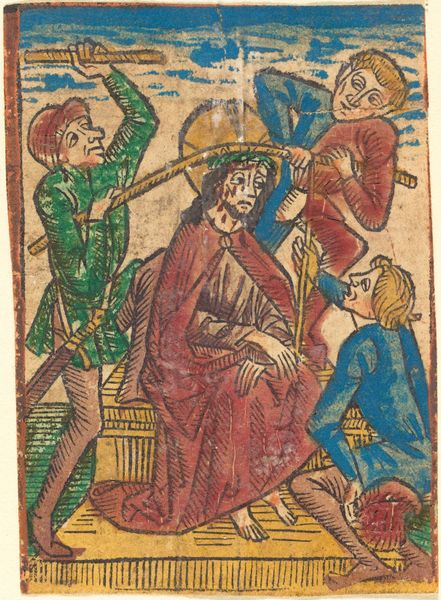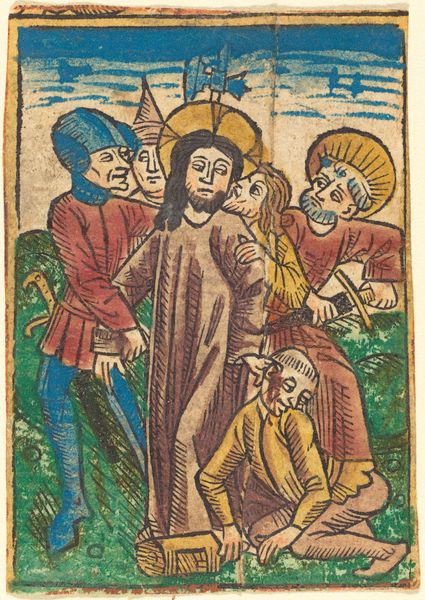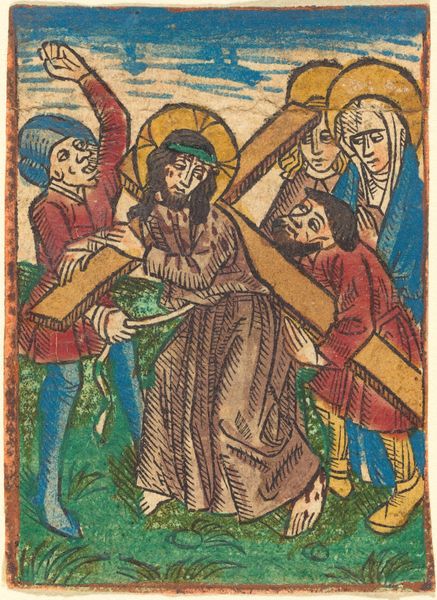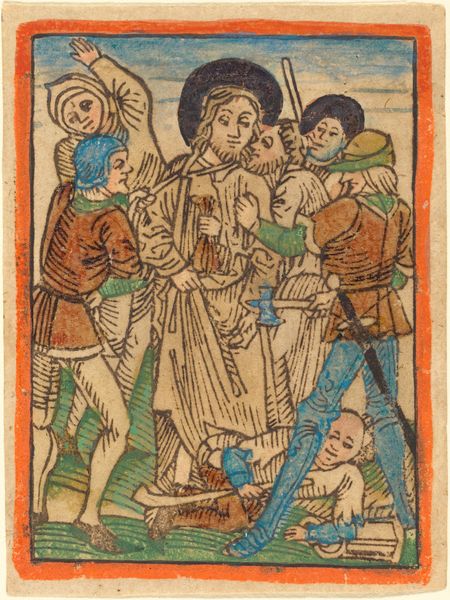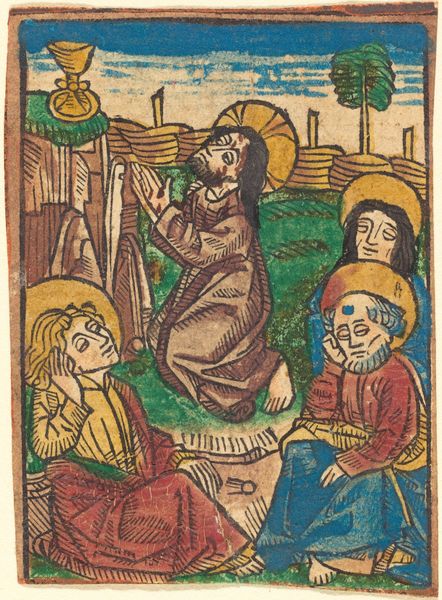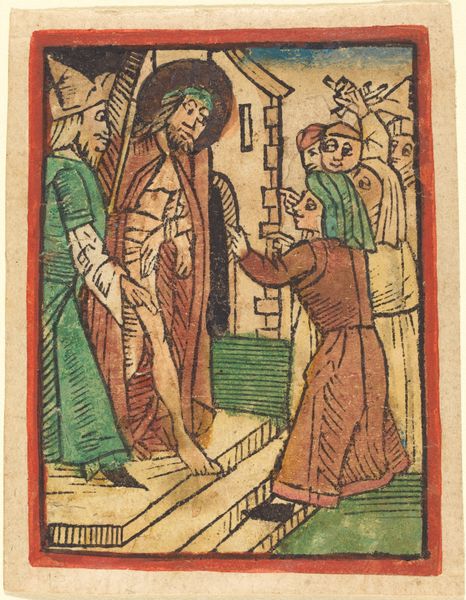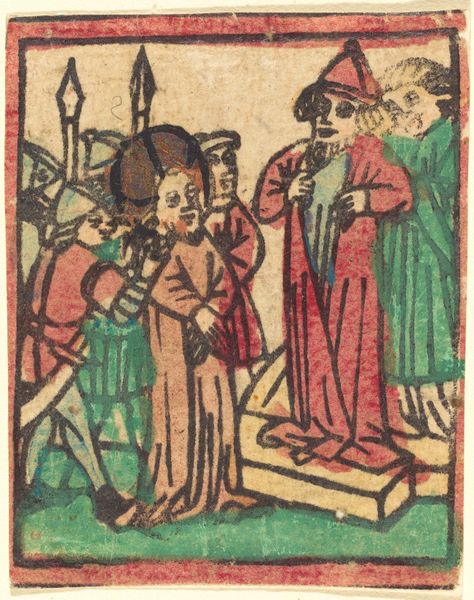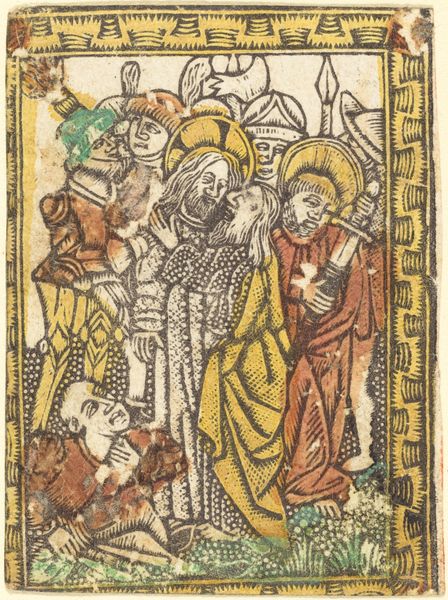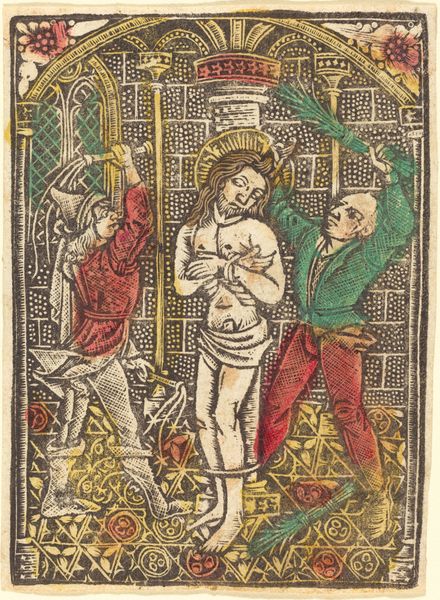
print, woodcut
#
medieval
#
narrative-art
# print
#
figuration
#
woodcut
#
naive art
#
genre-painting
#
northern-renaissance
Copyright: National Gallery of Art: CC0 1.0
Editor: We're looking at "The Treason of Judas," a woodcut from around 1490. It's fascinating how much narrative detail is packed into such a small print. What catches your eye when you look at this piece? Curator: Initially, the stark lines of the woodcut technique command attention. Notice how the artist employs varied hatching to delineate form and texture, a key component of Northern Renaissance printmaking. What do you make of the color palette? Editor: The colors are quite simple - mostly blues, greens, and browns - but I like the way they draw attention to certain figures. What is the formal effect of this coloration? Curator: The strategic use of color, though limited, serves to hierarchize the composition. Note, for example, how Judas is positioned at the center and stands out chromatically in a bold green garment. He is both literally and symbolically central. The Bishop’s elaborate blue garb contrasts with the others. Observe, too, how spatial depth is conveyed—or rather, conspicuously not conveyed—through a flattening of planes. Why do you think the artist may have omitted certain spatial relationships? Editor: Maybe the flatness adds to the sense of unease or urgency of the scene. Or that the location is a secondary importance, while what matters is what’s taking place. So, you're saying that the form and structure emphasize the narrative content? Curator: Precisely. The angularity of the lines, the distribution of color, and the calculated compression of space all contribute to the emotional tenor of the piece. I understand how one could interpret those elements for many purposes. Editor: I never thought about a print having so much formal complexity. I'll definitely look at woodcuts differently now. Curator: Indeed, examining art in terms of visual structures will heighten awareness, which should prompt thoughtful engagement.
Comments
No comments
Be the first to comment and join the conversation on the ultimate creative platform.
